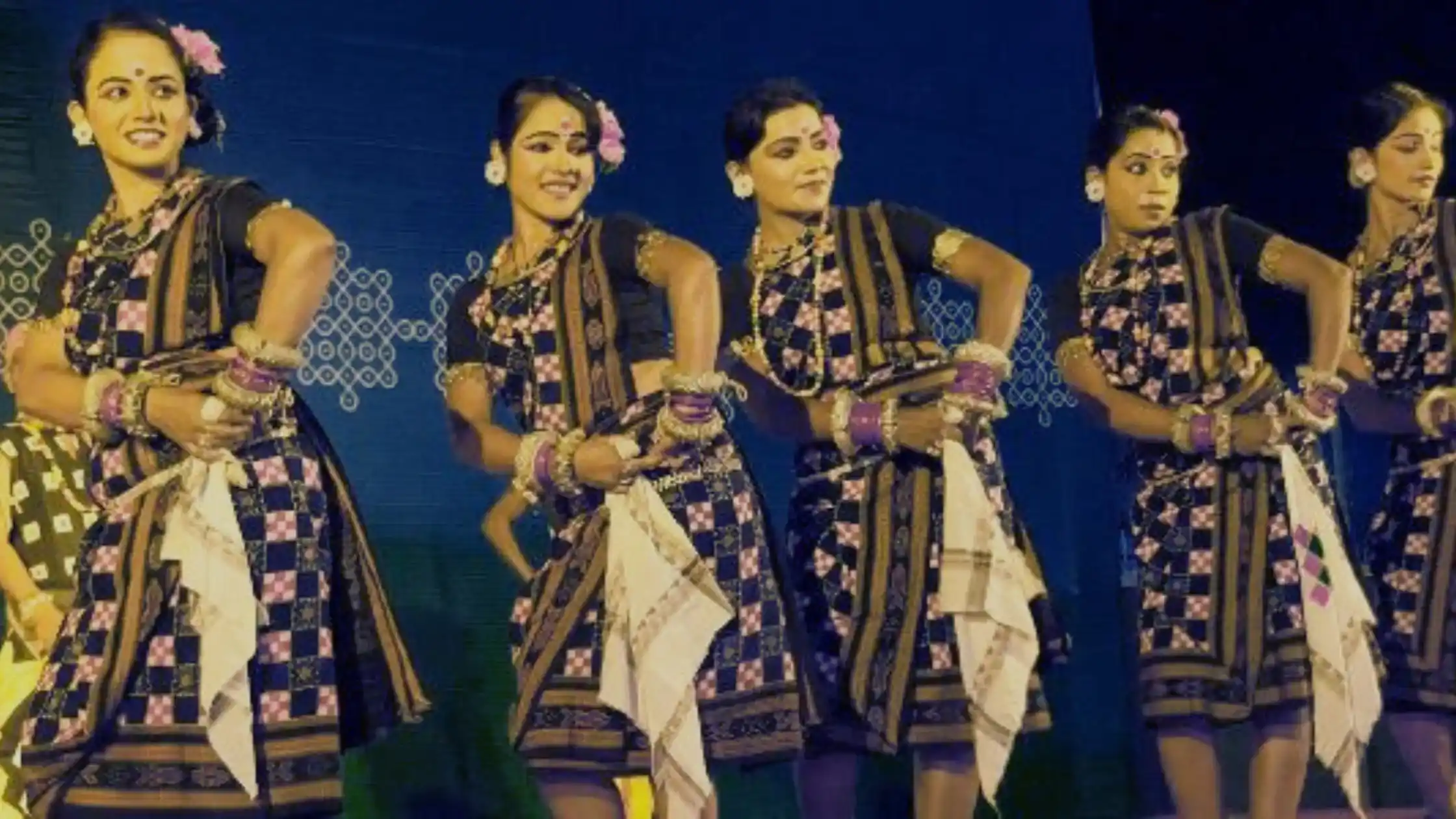Sambalpuri Dance
Sambalpuri dance, is a traditional folk dance form originating from the Sambalpur district of Odisha. It is a group dance from the Sambalpur region in western Odisha, performed by tribal people during festivals. Both men and women perform this dance as a beautiful form of visual expression.
History and Origin of Sambalpuri dance
Sambalpuri dance traces its roots back to the Sambalpur district of Odisha. This traditional folk dance has been passed down through generations, evolving over time while preserving its essence. Its origins can be traced to the agricultural communities of the region, where it was performed as a form of expression and celebration during festivals, weddings, and other auspicious occasions. Dalkhai is a type of Sambalpuri Dance.
Characteristics and Style
One of the defining characteristics of Sambalpuri dance is its vibrant and energetic style. Dancers adorned in colorful costumes, embellished with intricate designs, move gracefully to the rhythm of traditional folk music. The dance is marked by dynamic movements, intricate footwork, and expressive gestures, which convey stories, emotions, and cultural themes.
Sambalpuri Dance Costume
The costumes worn by Sambalpuri dancers are a visual spectacle in themselves. Brightly colored fabrics, often adorned with traditional motifs and embellishments, lend a sense of grandeur to the performance. The traditional attire for Sambalpuri dance typically includes👗💃🏽 :
👉Sambalpuri Sari or Sambalpuri Pata: A vibrant, intricately designed saree or fabric with traditional motifs like ikat patterns, animals, and nature-inspired themes.
👉Kanchula: A blouse or top worn with the saree, often in contrasting colors to the saree.
👉Sambalpuri Jewelry: Traditional jewelry like silver earrings, necklaces, bangles, and anklets adorned with beads, stones, or filigree work.
👉Bindi: A decorative dot worn on the forehead, often matching the attire’s color scheme.
👉Ghungroo: Ankle bells worn by dancers to accentuate movements and rhythms.
👉Hair accessories: Often adorned with flowers or traditional ornaments to enhance the overall look.
👉Makeup: Minimal makeup with emphasis on eyes, using kajal or eyeliner, and sometimes bold lip colors.
This attire reflects the rich cultural heritage of Odisha and is worn with pride during Sambalpuri dance performances. 🎭🌺
Sambalpuri Dance Musical Instruments
The folk music of western Odisha uses rare acoustic instruments, which hold a special status. These instruments create a distinct presence and enhance the beauty of human expressions. The “Dulduli” music, an orchestra from western Odisha’s folk tradition, combines instruments like the Dhol, Nisan, Tasha, Jhanj, Dandua Dhol, Mandal, and Muhuri.
Cultural Significance
Beyond its artistic appeal, Sambalpuri dance holds great cultural significance for the people of Odisha. It serves as a symbol of identity and pride, reflecting the values, beliefs, and traditions of the community. By preserving and promoting this ancient art form, communities strive to uphold their cultural heritage and pass it on to future generations.
Global Recognition and Outreach
In recent years, Sambalpuri dance has gained recognition not only within India but also on the global stage. Its vibrant performances and rich cultural heritage have captured the hearts of audiences worldwide. Through international festivals, cultural exchanges, and digital platforms, Sambalpuri dance continues to reach new audiences, fostering cross-cultural understanding and appreciation.
Conclusion
Sambalpuri dance stands as a testament to the rich cultural tapestry of Odisha, India. With its vibrant movements, expressive storytelling, and timeless appeal, it continues to enchant audiences and preserve the heritage of the region. As we celebrate the beauty and diversity of Sambalpuri dance, we also honor the traditions and legacies of those who have kept this ancient art form alive for generations to come.

